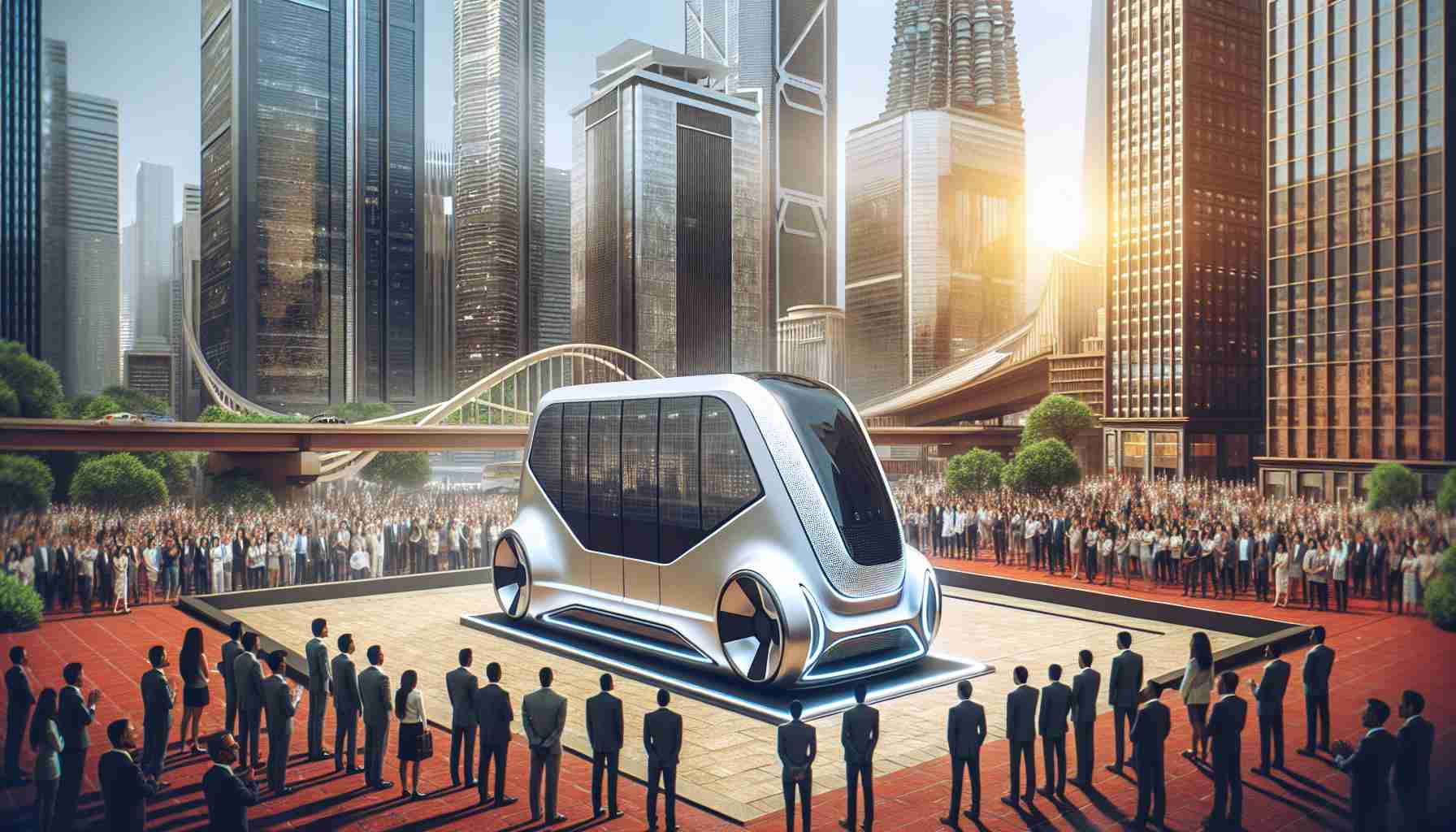An urban transport company recently revealed a groundbreaking design for their new autonomous shuttle during a high-profile event in the city center.
The sleek and modern vehicle showcased a cutting-edge, space-age appearance combined with state-of-the-art technology. Bold and innovative, the shuttle boasts a design that pushes the boundaries of traditional transportation norms, with no traditional steering wheel or foot pedals. A revolutionary feature of the shuttle is its use of innovative inductive charging technology, a step away from conventional plug-in systems.
The CEO of the transport company proudly introduced the next-generation vehicle to an enthusiastic audience, hinting at a future where transportation is redefined by ingenuity and forward-thinking.
The crowd was awed by the reveal, expressing excitement and admiration for the advanced design and capabilities of the cutting-edge shuttle. Attendees were given a sneak peek into the future of urban transport, with the promise of more to come in the years ahead.
Industry experts predict that the shuttle will become a game-changer in the transport sector, offering a glimpse into a world where autonomous vehicles are the norm rather than the exception.
The transport company aims to start production of the revolutionary shuttle within the next few years, with ambitious plans to revolutionize urban mobility. This bold move signals a shift towards a future where autonomous vehicles play a pivotal role in everyday transport, reshaping the way people move around cities.
Additional Facts:
– The concept of autonomous shuttles is gaining momentum globally, with various companies and cities investing in research and development to implement these innovative vehicles.
– Autonomous shuttles have the potential to improve traffic flow, reduce accidents, and lower emissions, contributing to a more sustainable and efficient transportation system.
– The technology behind autonomous shuttles includes sensors, cameras, lidar, and artificial intelligence systems that allow the vehicle to navigate roads and interact with other road users safely.
Key Questions:
1. How does the autonomous shuttle ensure passenger safety and comfort during the ride?
– Answer: Autonomous shuttles are equipped with advanced safety features such as emergency braking systems, collision avoidance technology, and interior amenities to enhance the passenger experience.
2. What are the regulatory challenges associated with deploying autonomous shuttles in urban environments?
– Answer: Regulations regarding autonomous vehicles vary across regions, with concerns about liability, insurance, data privacy, and infrastructure compatibility needing to be addressed for widespread adoption of autonomous shuttles.
Advantages:
– Improved Efficiency: Autonomous shuttles can optimize routes, reduce congestion, and enhance public transportation options, leading to a more efficient urban transport network.
– Environmental Benefits: By promoting shared mobility and utilizing electric powertrains, autonomous shuttles can contribute to lower carbon emissions and a cleaner environment.
Disadvantages:
– Technological Dependencies: Autonomous vehicles rely on complex software and hardware systems, making them susceptible to technical malfunctions and cybersecurity threats.
– Job Displacement: The widespread adoption of autonomous shuttles could impact employment in the transportation sector, raising concerns about job displacement for drivers and maintenance workers.
Suggested related link: IntelligentTransport.com



